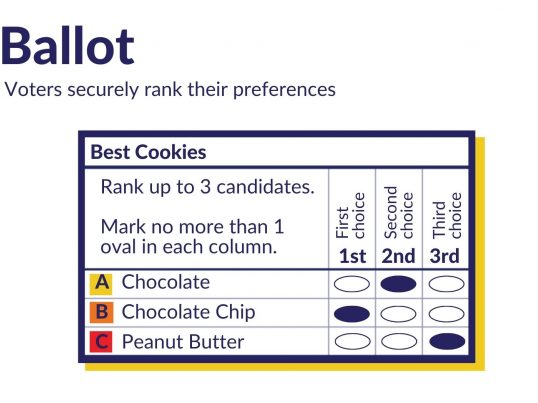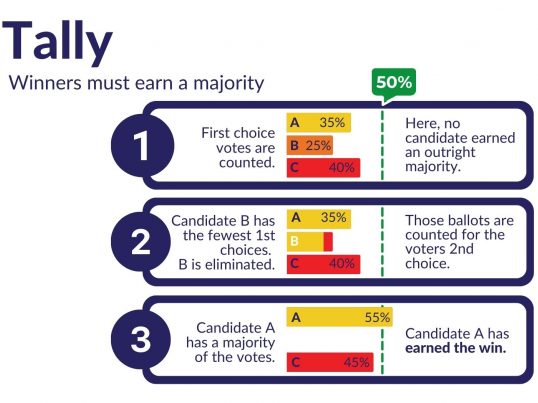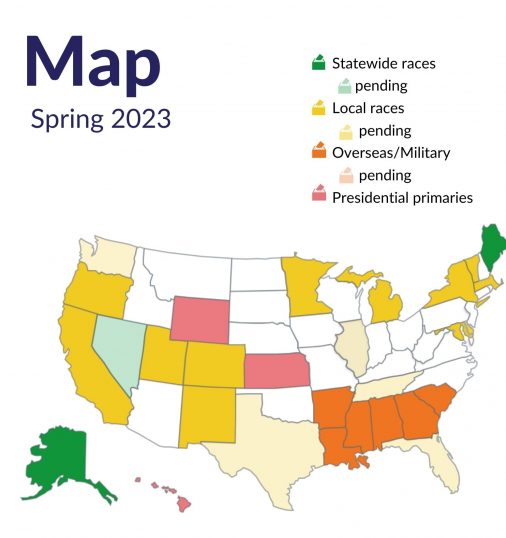
Ranked Choice Voting Resources



Benefits of Ranked Choice Voting
More Fair
- The tally finds the consensus of a majority - proving that the winner earned it.
- Voters freely and securely vote their values without fear of wasting their vote on a long-shot.
More Choice
- A greater variety of candidates can get in the race without skewing the results.
- More viewpoints are available to voters.
- More people of color and women run and win in proportion to their share of the population.
More Power
- Successful campaigns have to focus on the issues because they could need second-choice votes to build their win.
- Mud-slinging is reduced.
- Voters gain more power because it is more clear what the policy options are.
Saves Money
RCV can be used to replace top-two runoffs, because it also finds the consensus of a majority. It saves money because it is one-and-done.
- Pueblo would save $135,000+
- Colorado Springs would save $550,000+
- Denver would save $1,200,000+